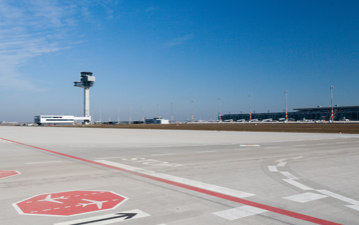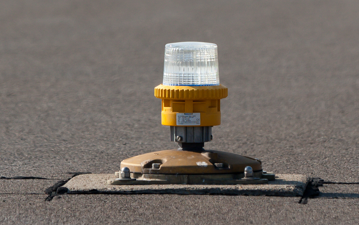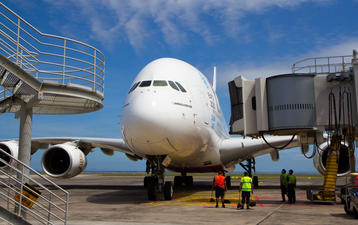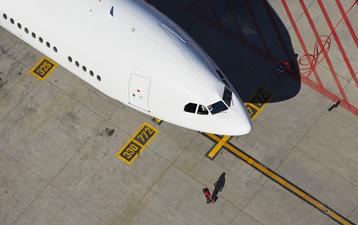Apron Planning and Aircraft Stand Design
Airport aprons, including aircraft stands, are the most active and congested areas at an airport. Their design and configuration are critical to the safety and efficiency of aircraft taxiing, parking, and servicing as well as related activities like equipment staging and storage. Airport aprons have to be regularly optimised and redesigned to stay up-to-date with evolving aircraft fleets, technology and equipment, and in-line with regulations, operational practices, and airlines requirements.
This 3-day training course is built upon airsight’s extensive experience in apron and aircraft stand optimisation applied at many international airports. Participants will learn through both theoretical modules and case studies the basic and advanced design considerations related to apron layout and aircraft stand design including operational practices like walk-in / walk-out aircraft stands and the triple lane concept.
This course targets professionals involved in aerodrome planning and design, operations, and compliance. This includes airport planners and engineers, aerodrome compliance managers, auditors, and not to forget Civil Aviation Authorities and regulatory oversight personnel.
Please note: Presenting an extensive program including both the basics of apron planning and related details, experienced airport planners might use the course as a refresher and the perfect opportunity to discuss their specific challenges with other participants.
Course Details
Location:BerlinLanguage:English
Date:17.11. - 19.11.2025
Duration:3 days
Provider:airsight GmbH
Course Fee
For courses in Berlin:
All customers will be charged 19% VAT.
The final price will be shown on your invoice.
Please note: If you want to register several particpants from your company but need a single invoice for each, please register each of them seperately.
Course Content
Introduction
- Definitions
- Regulatory Framework
- Relevant aircraft characteristics
- Obstacle clearance requirements / separation distances
Apron layout
- General considerations
- Types of aprons
- Terminal concepts
- Required number of aircraft stands
- Taxiway/taxilane system
- Concepts (e.g. single/dual/triple lane)
- Apron circulation
- Cul-de-sacs
- Push-back zones
- Service road system
- Tail-of-stand
- Head-of-stand
- Between aircraft stands
- Apron floodlighting
Aircraft stand layout
- General considerations
- Contact stands / remote stand
- Walk boarding
- Turn around cycle
- Capacity considerations
- Multiple aircraft ramp system (MARS) concepts
- Fleet mix
- Aircraft manoeuvring and parking
- Stand entry and exit
- Requirements related to guidance by marshaller
- Requirements related to guidance by VDGS
- Ground handlings requirements
- Aircraft doors and service points
- Equipment types and operational requirements (boarding, disembarking, loading, catering, fueling, power supply, pushback etc.)
- Staging and storage of ground services equipment (GSE)
- Specific requirements related to cargo operations / stands
- Visual aids (markings, lighting and signage)
Trainer
Denis Thiemer, Dipl.-Ing.
Denis holds a diploma in Transport Engineering and is further specialised in aerodrome design and operations with wide ranging experience in airside infrastructure design and aerodrome safety as well as compliance with ICAO SARPs and European aerodrome regulations.
With his expert knowledge and expertise, he has been supporting numerous airports worldwide in planning tasks within airside expansion and redesign projects, compliance assessments and aeronautical studies. Also, he assists clients in developing innovative operational concepts for safe and efficient airside operations. Another one of his fields of activity is Advanced Air Mobility and the operation of eVTOL aircraft, where he has been involved in vertiport feasibility studies, conceptual design tasks and associated approval processes. Furthermore, he is an instructor for a variety of airsight’s training courses.
Denis realized projects with aerodrome operators in Germany and abroad (e.g. Australia, Belgium, Cameroon, Jamaica, Luxembourg and New Zealand). Most recently he led a major aircraft stand redesign project with Frankfurt Airport aiming for compliance with EASA Certification Specifications for Aerodrome Design.
Target Group
- Airport operations managers
- Airport engineers and planners
- CAA aerodrome inspectors
- Aerodrome auditors
- Architects and civil engineers
Course Location
Participants are responsible for making their own travel arrangements. The accommodation and travel costs are at the charge of the participants. Please note that airsight does not perform any travel and hotel bookings for the participants. Rooms can however be booked directly by the participants by contacting the hotel. We would like to point out that from January 2025 a City Tax of 7.5% will be imposed on overnight stays for business and professional purposes in Berlin.
The course fee includes the registration, training material and examination. For non-virtual courses, coffee breaks and business lunch are also included.
Organisational Details
The course hours are scheduled as follows:
first training day: 10:00 am - 5:00 pm
mid-training days: 9:00 am - 5:00 pm
last training day: 8:00 am - 4:00 pm
Coffee breaks and business lunch are included in the course fee. At the end of the course, all participants will receive an airsight certificate based on EASA training regulations, which is highly recognised throughout the aviation industry.
About airsight Training
airsight Training course quality
airsight operates an ISO 9001 certified Quality Management System and pursues the objective to provide high quality services that fully meet the clients’ needs.
Course Details
Location:In-houseLanguage:German / English
Duration:3 days
Provider:airsight GmbH
Course Content
Introduction
- Definitions
- Regulatory Framework
- Relevant aircraft characteristics
- Obstacle clearance requirements / separation distances
Apron layout
- General considerations
- Types of aprons
- Terminal concepts
- Required number of aircraft stands
- Taxiway/taxilane system
- Concepts (e.g. single/dual/triple lane)
- Apron circulation
- Cul-de-sacs
- Push-back zones
- Service road system
- Tail-of-stand
- Head-of-stand
- Between aircraft stands
- Apron floodlighting
Aircraft stand layout
- General considerations
- Contact stands / remote stand
- Walk boarding
- Turn around cycle
- Capacity considerations
- Multiple aircraft ramp system (MARS) concepts
- Fleet mix
- Aircraft manoeuvring and parking
- Stand entry and exit
- Requirements related to guidance by marshaller
- Requirements related to guidance by VDGS
- Ground handlings requirements
- Aircraft doors and service points
- Equipment types and operational requirements (boarding, disembarking, loading, catering, fueling, power supply, pushback etc.)
- Staging and storage of ground services equipment (GSE)
- Specific requirements related to cargo operations / stands
- Visual aids (markings, lighting and signage)
Trainer
Denis Thiemer, Dipl.-Ing.
Denis holds a diploma in Transport Engineering and is further specialised in aerodrome design and operations with wide ranging experience in airside infrastructure design and aerodrome safety as well as compliance with ICAO SARPs and European aerodrome regulations.
With his expert knowledge and expertise, he has been supporting numerous airports worldwide in planning tasks within airside expansion and redesign projects, compliance assessments and aeronautical studies. Also, he assists clients in developing innovative operational concepts for safe and efficient airside operations. Another one of his fields of activity is Advanced Air Mobility and the operation of eVTOL aircraft, where he has been involved in vertiport feasibility studies, conceptual design tasks and associated approval processes. Furthermore, he is an instructor for a variety of airsight’s training courses.
Denis realized projects with aerodrome operators in Germany and abroad (e.g. Australia, Belgium, Cameroon, Jamaica, Luxembourg and New Zealand). Most recently he led a major aircraft stand redesign project with Frankfurt Airport aiming for compliance with EASA Certification Specifications for Aerodrome Design.
Hardy Springborn, M.Sc.
Hardy is a graduated aeronautical engineer and holds a Master of Science degree in Engineering (Aviation). He is specialised in aerodrome planning and infrastructure design as well as aerodrome operations and compliance. His specialisation is not only supplemented by his experience as an aircraft mechanic, but also by his activities as a certified lighting planner.
As a vital part of our aerodrome planning department within the consulting division of airsight, Hardy supports our customers in questions regarding the design and development of aerodrome movement areas, such as aprons and taxiways, and in questions of daily operations, such as ad hoc enquiries for the handling planning of special aircraft activities.
Hardy has been working on several projects for airsight. These projects recently included the airports of Berlin, Cologne, Dusseldorf, Douala, Luxembourg, Sydney, and Yaoundé.
Target Group
- Airport operations managers
- Airport engineers and planners
- CAA aerodrome inspectors
- Aerodrome auditors
- Architects and civil engineers
Organisational Details
The course hours are scheduled as follows:
first training day: 10:00 am - 6:00 pm
mid-training days: 9:00 am - 5:00 pm
last training day: 8:00 am - 4:00 pm
Coffee breaks and business lunch are included in the course fee. At the end of the course, all participants will receive an airsight certificate based on EASA training regulations, which is highly recognised throughout the aviation industry.
About airsight Training
airsight Training course quality
airsight operates an ISO 9001 certified Quality Management System and pursues the objective to provide high quality services that fully meet the clients’ needs.

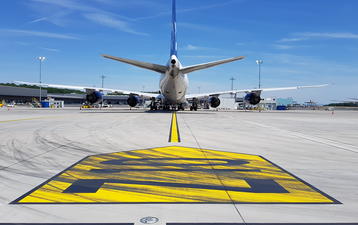
 Training 5 or more people? Ask for an In-house course at your premises or online!
Training 5 or more people? Ask for an In-house course at your premises or online!

